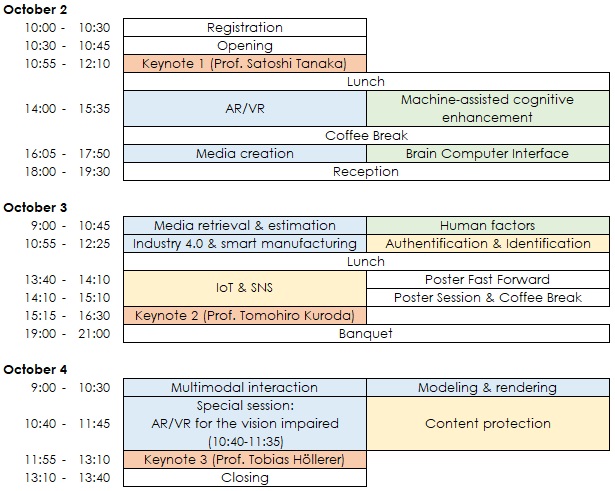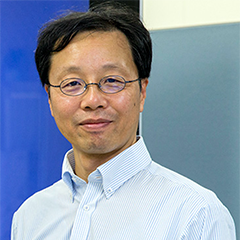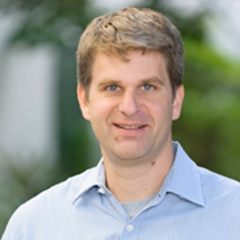PROGRAM (TENTATIVE)

Keynote Speaker 1
Prof. Satoshi Tanaka(College of Information Science and Engineering, Ritsumeikan University)
Title: High-Quality & Transparent Visualization of Large-Scale Point Clouds Acquired by 3D Scanning

Abstract
This talk introduces our recent achievements on high-quality and transparent 3D imaging of the large-scale and complex point clouds acquired via the 3D scanning, i.e., the laser scanning and the photogrammetric scanning, of real 3D objects. Our method is based on a stochastic algorithm and directly uses 3D points acquired by the 3D scanning as the rendering primitives. The technique achieves quick rendering and the correct depth feel of large-scale and complex 3D objects in the real world quite easily. We demonstrate the effectiveness of our method by applying it to the famous Japanese festival floats of high cultural value, modern buildings, industrial factories, and many others.
Biography
Prof. Satoshi Tanaka got his Ph.D. in theoretical physics at Waseda University, Japan in 1987. After experiencing an assistant professor, a senior lecturer, and an associate professor at Waseda University and Fukui University, he became a professor of Ritsumeikan University in 2002. His current research target is computer visualization of complex 3D shapes such as 3D scanned cultural heritage objects, inside structures of a human body, and fluid simulation results. Recently, he was the President of JSST (Japan Society for Simulation Technology) and the President of ASIASIM (the Federation of Asia Simulation Societies). Currently, he is working as the vice-president of the VSJ (Visualization Society of Japan) and a cooperation member of Japan Science Council. He is the best paper winners at Asia Simulation Conference 2012, Journal of Advanced Simulation in Science and Engineering in 2014, and many others.
Keynote Speaker 2
Prof. Tomohiro Kuroda(Kyoto University)
Title: Social Hospital and Preemptive Medicine : Prospects of Cyber-Physical Clinical Medicine in Information Age

Abstract
Rapid introduction of ICT and rapid advancement of Reproductive Medical Science provide disruptive changes for Clinical Medicine.
IoT brings healthcare services out of hospital, and MR and AI support clinical activities anywhere. iPS cells enable us to make brute-force attack to intractable diseases. This lecture is to share appearing future of clinical medicine under current scientific progress, and how we computer scientists contributes to speed up the revolution.
Biography
Tomohiro Kuroda received B.S. in information science from Kyoto University, Japan in 1994, M.S. and Ph.D. in information science from Nara Institute of Science and Technology, Japan in 1996 and 1998. He was with Graduate School of Information Science at Nara Institute of Science and Technology, Japan from 1998 to 2001, where he held the rank of assistant professor, with Department of Medical Informatics of Kyoto University Hospital, Japan from 2001 to 2006 and from 2009 to 2013, where he held the rank of lecturer and associate professor respectively, and with Department of Information Processing Science of University of Oulu, Finland in 2001 and 2006, where he held the rank of visiting professor. He was with Graduate School of Engineering Science of Osaka University, Japan from 2007 to 2009, where he held the rank of associated professor. Since August 2013, he has been the director of Division of Medical Information Technology and Administrative Planning (Chief Information Office) of Kyoto University Hospital, Japan, where he also serves as the professor of medical informatics in the graduate school of medicine and the graduate school of informatics. His current research interests include Human Interface, Virtual/Augmented Reality, Wearable/Ubiquitous Computing, and Medical/Assistive informatics. He is a member of IEEE, ISVR, VRSJ, HISJ, JSMBE, JAMI, JSMVR, ISCIE, JASL, and others.
Keynote Speaker 3
Tobias Höllerer(University of California, Santa Barbara)
Title: Learning for Reality

Abstract
We are in a technological transition period. The last grand paradigm shift in terms of technology adoption, the mobile revolution, happened over a decade ago. Since then, several technologies have been competing to become the next big thing: Internet of Things, Physical Computing, Brain-Computer Interfaces, AI and Agent-based Computing, and of course Virtual and Augmented Reality. In this talk, we will make the argument that Augmented Reality in particular is well-positioned to play nice with any of these up-and-coming technologies and thus could indeed become the ubiquitous user interface that many investors and tech giants apparently trust it will be. It is also not hard to predict given its massive adoption and many success stories over the past decade, that Machine Learning, and particularly Deep Learning, will play a major role in any human-computer-interaction innovations to come, especially ones involving knowledge about the real, physical world. But the future that is outlined by these technological possibilities is not without problems. Machine Learning models can be hard to understand, fine-tune, control, and protect against attacks. More sensors (as beneficial for AR) means more potential privacy intrusions. And people might rely more on automation than is good for them. What can we do as researchers to work towards a more humane technology outlook? Our take: give technology adopters more control, and let them learn from and for reality.
Biography
Tobias Höllerer is Professor of Computer Science at the University of California, Santa Barbara, where he directs the Four Eyes Laboratory, conducting research in the four I’s of Imaging, Interaction, and Innovative Interfaces. Dr. Höllerer holds a Diplom in informatics from the Technical University of Berlin as well as an MS and PhD in computer science from Columbia University. He is a recipient of the US National Science Foundation’s CAREER award, for his work on “Anywhere Augmentation”, enabling mobile computer users to place annotations in 3D space wherever they go. He was named an ACM Distinguished Scientist in 2013. Dr. Höllerer is co-author of a textbook on Augmented Reality, as well as over 200 peer-reviewed journal and conference publications in the areas of augmented and virtual reality, information visualization, 3D displays and interaction, mobile and wearable computing, and social computing. Several of these publications won Best Paper or Honorable Mention awards at such venues as the IEEE International Symposium on Mixed and Augmented Reality (ISMAR), IEEE Virtual Reality, ACM Virtual Reality Software and Technology, ACM User Interface Software and Technology, ACM MobileHCI, IEEE SocialCom, and IEEE CogSIMA.
CONFERENCE BANQUET
Thursday, 3 October 2019 19:00 to 21:00
Location : Funatsuru Kyoto Kamogawa Resort

General Track
AR/VR (October 2, 14:00-15:35)
Session chair: Kouichi Konno (Iwate University)Development of Easy Attachable Biological Information Measurement Device for Various Head Mounted Displays
Masahiro Inazawa (The University of Tokyo, Japan) and Yuki Ban (The University of Tokyo, Japan)
An Efficient Diminished Reality Approach Using Real-Time Surface Reconstruction
Christian Kunert (Ilmenau University of Technology), Tobias Schwandt (Ilmenau University of Technology), and Wolfgang Broll (Ilmenau University of Technology)
Mixed Reality User Interface for Astronauts Procedure Viewer (short)
Kaj Helin (VTT Technical Research Centre of Finland Ltd, Finland), Jaakko Karjalainen (VTT Technical Research Centre of Finland Ltd, Finland), Paul Kiernan (SKYTEK Ltd Dublin, Ireland), Mikael Wolff (ESTEC), and David Martinez Oliveira (ESTEC)
ParaVR: Paramedic Virtual Reality Training Simulator (short)
Neil Vaughan (University of Chester), Nigel John (University of Chester), and Nigel Rees (Welsh Ambulance Services NHS Trust)
CPR Virtual Reality Training Simulator for Schools (short)
Neil Vaughan (University of Chester), Nigel John (University of Chester), and Nigel Rees (Welsh Ambulance Services NHS Trust)
Media Creation (October 2, 16:05-17:50)
Session chair: Takayuki Itoh (Ochanomizu University)Flexible Indoor Scene Synthesis via a Multi-Object Particle Swarm Intelligence Optimization Algorithm and User Intentions
Yuerong Li (College of Information Science and Technology, Beijing Normal University, Beijing, China), Xingce Wang (College of Information Science and Technology, Beijing Normal University, Beijing, China), Zhongke Wu (College of Information Science and Technology, Beijing Normal University, Beijing, China), Shaolong Liu (College of Information Science and Technology, Beijing Normal University, Beijing, China), and Mingquan Zhou (College of Information Science and Technology, Beijing Normal University, Beijing, China)
Stylized Line Drawing of 3D Models using CNN
Mitsuhiro Uchida (Tokyo Institute of Technology) and Suguru Saito (Tokyo Institute of Technology)
Making of The Dark Anim: Technical and Scientific Notes
Monica Zoppè (Scientific Visualization Unit IFC - CNR), Tiziana Loni (Scientific Visualization Unit, IFC – CNR, Pisa, Italy), Ilaria Carlone (Scientific Visualization Unit, IFC – CNR, Pisa, Italy), and Stefano Cianchetta (Scientific Visualization Unit, IFC – CNR, Pisa, Italy)
Semi-Automatic Creation of an Anime-Like 3D Face Model from a Single Illustration (short)
Takayuki Niki (Saitama University) and Takashi Komuro (Saitama University)
Music in the Air with Leap Motion Controller (short)
Alexei Sourin (Nanyang Technological University, Singapore)
Media Retrieval & Estimation (October 3, 9:00-10:45)
Session chair: Xiaoyang Mao (University of Yamanashi)Visual Saliency Prediction in Dynamic Virtual Reality Environments Experienced with Head-Mounted Displays: An Exploratory Study
Dilara Albayrak (TED University), Mehmet Bahadir Askin (Hacettepe University), Tolga K. Capin (TED University), and Ufuk Celikcan (Hacettepe University)
Query by Partially-Drawn Sketches for 3D Shape Retrieval
Shutaro Kuwabara (University of Yamanashi), Ryutarou Ohbuchi (University of Yamanashi) and Takahiko Furuya (University of Yamanashi)
A Harmonic Wave Kernel Signature for Three-Dimensional Skull Similarity Measurements
Dan Zhang (Beijing Normal University Beijing, China), Zhongke Wu (Beijing Normal University Beijing, China), Xingce Wang (Beijing Normal University Beijing, China), Chenlei Lv (Beijing Normal University Beijing, China), and Mingquan Zhou (Beijing Normal University Beijing, China)
Bird Species Classification with Audio-Visual Data using CNN and Multiple Kernel Learning (short)
Naranchimeg Bold (Iwate University, Japan), Chao Zhang (University of Fukui, Japan), and Takuya Akashi (Iwate University, Japan)
A Tangible Interface using 3D Printed Figures for Searching for Combat Motions of Two Characters (short)
Kouhei Hino (Kyushu Institute of Technology) and Masaki Oshita (Kyushu Institute of Technology)
Industry 4.0 & Smart Manufacturing (October 3, 10:55-12:25)
Session chair: Alexei Sourin (Nanyang Technological University)Modeling Distributed Stream Processing Systems Under Heavy Workload
Qureshi Muhammad Mudassar (Huazhong University of Science and Technology), Hanhua Chen (Huazhong University of Science and Technology), and Hai Jin (Huazhong University of Science and Technology)
Detection Defect in Printed Circuit Boards using Unsupervised Feature Extraction Upon Transfer Learning
Ihar Volkau (Nanyang Technological University, Singapore), Mujeeb Abdul (Nanyang Technological University, Singapore), Wenting Dai (Nanyang Technological University, Singapore), Marius Erdt (Nanyang Technological University, Singapore), and Alexei Sourin (Nanyang Technological University, Singapore)
Automatic Furniture Layout Based on Functional Area Division
Bailin Yang (Zhejiang Gongshang University), Liuliu Li (Zhejiang Gongshang University), Chao Song (Zhejiang Gongshang University), Zhaoyi Jiang (Zhejiang Gongshang University), and Yun Ling (Zhejiang Gongshang University)
Vehicle Rear-Lamp Detection at Nighttime via Probabilistic Bitwise Genetic Algorithm (short)
Takumi Nakane (University of Fukui, Japan), Tatsuya Takeshita (University of Fukui, Japan), Shogo Tokai (University of Fukui, Japan), and Chao Zhang (University of Fukui, Japan)
Multimodal Interaction (October 4, 9:00-10:30)
Session chair: Owen Noel Newton Fernando (Nanyang Technological University)Composite Sketch Recognition Using Multi-Scale Hog Features and Semantic Attributes
Xinying Xue (Hangzhou Dianzi University, China), Jiayi Xu (Hangzhou Dianzi University, China), and Xiaoyang Mao (University of Yamanashi, Japan)
Combining Tendon Vibration and Visual Stimulation Enhances Kinesthetic Illusions
Daiki Hagimori (Nara Institute of Science and Technology, Japan), Naoya Isoyama (Nara Institute of Science and Technology, Japan), Shunsuke Yoshimoto (The University of Tokyo, Japan), Nobuchika Sakata (Nara Institute of Science and Technology, Japan), and Kiyoshi Kiyokawa (Nara Institute of Science and Technology, Japan)
Chronic Stress Level Estimation Focused on Motion Pattern Changes Acquired from Seat Pressure Distribution
Masanori Kuroha (The University of Tokyo), Yuki Ban (The University of Tokyo), Rui Fukui (The University of Tokyo), and Shin'ichi Warisawa (The University of Tokyo)
Inducing Simple Actions While Working by Generating Tactile Apparent Motion (short)
Yuki Ashida (The University of Tokyo), Yuki Ban (The University of Tokyo), Rui Fukui (The University of Tokyo), and Shin'ichi Warisawa (The University of Tokyo)
Modeling & Rendering (October 4, 9:00-10:30)
Session chair: Masahiro Toyoura (University of Yamanashi)Automated Generation of Roofs by Straight Skeleton with Line Segment Event
Kenichi Sugihara (Gifu-Kyoritsu University, Japan), Takahiro Murase (ChukyoGakuin University, Japan) and Zhenjiang Shen (Kanazawa University, Japan)
Realistic Folded Surface Modeling From Sketching
Yufei Zheng (Tokyo Institute of Technology), Hatsu Shi (Tokyo Institute of Technology), and Suguru Saito (Tokyo Institute of Technology)
Simulation Controlling Method for Generating Desired Water Caustics
Kenta Suzuki (Institute of Advanced Media Arts and Sciences, Japan), Makoto Fujisawa (University of Tsukuba, Japan), and Masahiko Mikawa (University of Tsukuba, Japan)
Social Computing and Older Adults: Challenges with Data Loss and Digital Legacies (short)
Derani Dissanayake (Edith Cowan University, Australia) and David Cook (Edith Cowan University, Australia)
Special Session: AR/VR for the Vision Impaired (October 4, 10:40-11:35)
Session chair: Kiyoshi Kiyokawa (Nara Institute of Science and Technology)Computational Alleviation of Homonymous Visual Field Defect with OST-HMD: The Effect of Size and Position of Overlaid Overview Window
Xi Zhao (Keio University, Japan), Kentaro Go (University of Yamanashi, Japan), Kenji Kashiwagi (University of Yamanashi, Japan), Masahiro Toyoura (University of Yamanashi), Xiaoyang Mao (University of Yamanashi, Japan), and Issei Fujishiro (Keio University, Japan)
Eyes-Free Text Entry with EdgeWrite Alphabets for Round-Face Smartwatches (short)
Kentaro Go (University of Yamanashi, Japan), Mei Kikawa (University of Yamanashi, Japan), Yuichiro Kinoshita (University of Yamanashi, Japan), and Xiaoyang Mao (University of Yamanashi, Japan)
Visual Assessment of Distorted View for Metamorphopsia Patient by Interactive Line Manipulation (short)
Hiromichi Ichige (University of Yamanashi), Masahiro Toyoura (University of Yamanashi), Kentaro Go (University of Yamanashi), Kenji Kashiwagi (University of Yamanashi), Issei Fujishiro (Keio University), and Xiaoyang Mao (University of Yamanashi)
Cognitive Human-machine Interaction Track
Machine-Assisted Enhancement (October 2, 14:00-15:35)
Session chair: Yisi Liu (Fraunhofer Singapore, Singapore)On the Ethnic Classification of Pakistani Face using Deep Learning
Shelina Khalid Jilani (University of Bradford), Hassan Ugail (University of Bradford), Ali Maina Bukar (University of Bradford), and Andrew Logan (Glasgow Caledonian University)
Modified Bat Algorithm with Local Search for Fractal Image Compression of Bitmap Images
Akemi Gálvez (Toho University, Japan & University of Cantabria, Spain) and Andrés Iglesias (Toho University, Japan & University of Cantabria, Spain)
La Petite Fee Cosmo: Learning Data Structures Through Game-based Learning (short)
Vinayak Teoh Kannappan (School of Computer Science & Engineering, Nanyang Technological University, Singapore), Owen Noel Newton Fernando (School of Computer Science & Engineering, Nanyang Technological University, Singapore), Anupam Chattopadhyay (School of Computer Science & Engineering, Nanyang Technological University, Singapore), Xavier Tan, (School of Computer Science & Engineering, Nanyang Technological University, Singapore) Jeffrey Yan Jack Hong (School of Art, Design & Media, Nanyang Technological University, Singapore), Hock Soon Seah (School of Computer Science & Engineering, Nanyang Technological University, Singapore), and Hui En Lye (School of Art, Design & Media, Nanyang Technological University, Singapore)
Applying Firefly Algorithm to Data Fitting for the Van der Waals Equation of State with Bézier Curves (short)
Almudena Campuzano (Oregon State University, USA & University of Cantabria, Spain), Andrés Iglesias (Toho University, Japan & University of Cantabria, Spain), and Akemi Gálvez (Toho University, Japan & University of Cantabria, Spain)
Multi-Modal Recognition of Mental Workload Using Empirical Mode Decomposition and Semi-Supervised Learning (short)
Jianhua Zhang (Oslo Metropolitan University, Norway) and Jianrong Li (East China University of Science and Technology, China)
Brain Computer Interface (October 2, 16:05-17:45)
Session chair: Andres Iglesias (Universidad de Cantabria, Spain)Detection of Humanoid Robot Design Preferences Using EEG and Eye Tracker
Yisi Liu (Fraunhofer Singapore), Fan Li (Nanyang Technological University), Lin Hei Tang (Nanyang Technological University), Zirui Lan (Fraunhofer Singapore, Nanyang Technological University), Jian Cui (Fraunhofer Singapore, Nanyang Technological University), Olga Sourina (Fraunhofer Singapore, Nanyang Technological University), and Chun-Hsien Chen (Nanyang Technological University)
Idle-State Detection in Multi-User Motor Imagery Brain Computer Interface with Cross-Brain CSP and Hyper-Brain-Network
Li Zhu (Xiamen University, China), Chongwei Su (Hangzhou Dianzi University, China), Gaochao Cui (National Institute of Advanced Industrial Science and Technology, Japan), Changle Zhou (Xiamen University, China), Jianhai Zhang (Hangzhou Dianzi University, China), and Wanzeng Kong (Hangzhou Dianzi University)
Epileptic Seizure Detection from EEG Signals Using Multiband Features with Feedforward Neural Network
Kazi Mahmudul Hassan (Jatiya Kabi Kazi Nazrul Islam University), Md. Rabiul Islam (Tokyo University Agriculture and Technology), Toshihisa Tanaka (Tokyo University of Agriculture and Technology), and Md. Khademul Islam Molla (University of Rajshahi)
Electroencephalography Based Motor Imagery Classification Using Unsupervised Feature Selection
Abdullah Al Shiam (University of Rajshahi), Md. Rabiul Islam (Tokyo University of Agriculture and Technology), Toshihisa Tanaka (Tokyo University of Agriculture and Technology), and Md. Khademul Islam Molla (University of Rajshahi)
Human Factors (October 3, 9:00-10:40)
Session chair: Toshihisa Tanaka (Tokyo University of Agriculture and Technology, Japan)EEG-Based Cross-Subject Mental Fatigue Recognition
Yisi Liu (Fraunhofer Singapore), Zirui Lan (Fraunhofer Singapore, Nanyang Technological University), Jian Cui (Fraunhofer Singapore, Nanyang Technological University), Olga Sourina (Fraunhofer Singapore, Nanyang Technological University), and Wolfgang Müeller-Wittig (Fraunhofer Singapore, Nanyang Technological University)
EEG-Based Human Factors Evaluation of Air Traffic Control Operators (ATCOs) for Optimal Training
Yisi Liu (Fraunhofer Singapore), Zirui Lan (Fraunhofer Singapore, Nanyang Technological University), Fitri Traspsilawati (Universitas Gadjah Mada), Olga Sourina (Fraunhofer Singapore, Nanyang Technological University), Chun-Hsien Chen (Nanyang Technological University), and Wolfgang Müeller-Wittig (Fraunhofer Singapore, Nanyang Technological University)
Determining Necessary Length of the Alternating Series Test for Parkinson's Disease Modelling
Sven Nomm (Tallinn University of Technology), Tanel Kossas (Tallinn University of Technology), Aaro Toomela (Tallinn Univeristy), Kadri Medijainen (University of Tartu), and Pille Taba (University of Tartu)
Human Movements Classification Using Multi-Channel Surface EMG Signals and Deep Learning Technique
Jianhua Zhang (Oslo Metropolitan University, Norway), Chen Ling (East China University of Science and Technology, China) and Sunan Li (East China University of Science and Technology, China)
Cybersecurity and Biometrics Track
Authentification & Identification (October 3, 10:55-12:25)
Session chair: Abir Mehnni (Normandie Univ, UNICAEN, ENSICAEN, CNRS, GREYC)Vulnerability of Adaptive Strategies of Keystroke Dynamics Based Authentication Against Different Attack Types
Abir Mhenni (Normandie Univ, UNICAEN, ENSICAEN, CNRS, GREYC, France), Denis Migdal (Normandie Univ, UNICAEN, ENSICAEN, CNRS, GREYC, France), Estelle Cherrier (Normandie Univ, UNICAEN, ENSICAEN, CNRS, GREYC, France), Christophe Rosenberger (Normandie Univ, UNICAEN, ENSICAEN, CNRS, GREYC, France), and Najoua Essoukri Ben Amara (Universite de Sousse, Ecole Nationale d’Ing enieurs de Sousse, Laboratory of Advanced Technology and Intelligent Systems, Tunisie)
Person Identification from Visual Aesthetics Using Gene Expression Programming
Brandon Sieu (University of Calgary) and Marina Gavrilova (University of Calgary)
Multi-Instance Cancelable Biometric System using Convolutional Neural Network
Tanuja Sudhakar (University of Calgary, Canada) and Marina Gavrilova (University of Calgary, Canada)
Comparative Study of Fingerprint Database Indexing Methods (short)
Joannes Falade (ENSICAEN/Imprimerie Nationale), Sandra Cremer (Imprimerie Nationale, France) and Christophe Rosenberger (GREYC ENSICAEN, France)
IoT & SNS (October 3, 13:40-15:10)
Session chair: Joannes Falade (ENSICAEN/Imprimerie Nationale)My Behavior is my Privacy & Secure Password !
Denis Migdal (Normandie Univ, UNICAEN, ENSICAEN, CNRS, GREYC, France) and Christophe Rosenberger (Normandie Univ, UNICAEN, ENSICAEN, CNRS, GREYC, France)
Impact of Low-Bitwidth Quantization on the Adversarial Robustness for Embedded Neural Networks
Rémi Bernhard (CEA Tech, Equipe Commune CEA Tech - Mines Saint-Etienne, France), Pierre-Alain Moellic (CEA Tech, Equipe Commune CEA Tech - Mines Saint-Etienne, France), and Jean-Max Dutertre (Mines Saint-Etienne, Centre CMP, France)
Gathering Cyber Threat Intelligence from Twitter Using Novelty Classification
Ba-Dung Le (University of Adelaide, Australia), Guanhua Wang (University of Adelaide, Australia), Mehwish Nasim (University of Adelaide, Australia), and Muhammad Ali Babar (University of Adelaide, Australia)
Hybrid Feature Selection Models for Machine Learning Based Botnet Detection in IoT Networks (short)
Alejandro Guerra-Manzanares (Tallinn University of Technology, Estonia), Hayretdin Bahsi (Tallinn University of Technology, Estonia), and Sven Nõmm (Tallinn University of Technology, Estonia)
Content Protection (October 4, 10:40-11:45)
Session chair: Denis Migdal (Normandie Univ, UNICAEN, ENSICAEN, CNRS, GREYC)A Practical Use Case of Homomorphic Encryption
Amina Bel Korchi (Mines Saint-Etienne, CEA-Tech, Centre CMP, Gardanne France; KONTRON) and Nadia El Mrabet (Mines Saint-Etienne, CEA-Tech, Centre CMP, Gardanne France)
A Shoulder-Surfing Resistant Image-Based Authentication Scheme with a Brain-Computer Interface
Florian Gondesen (Nanyang Technological University, Singapore; Hamburg University of Technology, Germany), Matthias Marx (University of Hamburg, Germany), and Ann-Christine Kycler (Hamburg University of Technology, Germany)
A Contribution to Detect and Prevent a Website Defacement (short)
Barerem-Melgueba Mao (Université de Lomé) and Kanlanfei Damnam Bagolibe (Autorité de Réglementation des Secteurs de Postes et de Télécommunications)
Poster Papers (October 3, Fast Forward:13:40-14:10, Presentation:14:10-15:10)
Finding Hidden Shrines using AR and Clustering TechniquesLiu Jihao Bryan (Nanyang Technological University, Singapore), Owen Noel Newton Fernando (Nanyang Technological University, Singapore), Sujatha Arundathi Meegama (Nanyang Technological University, Singapore), Hedren Sum Wai Yuan (Nanyang Technological University, Singapore), and Muhammad Faisal Bin Husni (Nanyang Technological University, Singapore)
Augmented Reality Hologram
Jia Jun Gan (Nanyang Technological University, Singapore) and Owen Noel Newton Fernando (Nanyang Technological University, Singapore)
Colorblind-Shareable Videos
Xinghong Hu (The Chinese University of Hong Kong), Xueting Liu (Caritas Institute of Higher Education), Xiangyu Mao (SenseTime Limited Company), and Tien-Tsin Wong (The Chinese University of Hong Kong)
A Deformation Method for Simulating Coating Degradation While Taking Mechanical Behavior into Account
Akinori Ishitobi (Keio University, Japan), Masanori Nakayama (Keio University, Japan), and Issei Fujishiro (Keio University, Japan)
Tsunami Evacuation Simulation System for Disaster Prevention Plan
Yasuo Kawai (Bunkyo University) and Yurie Kaizu (Bunkyo University)
Development of Past General Townscape Simulation System Using Time Series Design and Ukiyo-e Style Rendering
Yasuo Kawai (Bunkyo University)
The Art of La Petite Fee Cosmo
Hui En Lye (Nanyang Technological University), Vinayak Kannappan (Nanyang Technological University), and Jeffrey Hong (Nanyang Technological University)
Automatic Image Enhancement Taking into Account User Preference
Yu Murata (Hokkaido University) and Yoshinori Dobashi (Hokkaido University)
Twittener: An Aggregated News Platform
Owen Noel Newton Fernando (Nanyang Technological University) and Chan Wei Chang (Nanyang Technological University)
Realizing Pseudo Color Bleeding with a Deep Composite Image
Masaru Ohkawara (Keio University) and Issei Fujishiro (Keio University)
A Study of Usability Improvement in Immersive VR Programming Environment
Atsuki Onishi (Osaka Institute of Technology), Satoshi Nishiguchi (Osaka Institute of Technology), Yasuharu Mizutani (Osaka Institute of Technology), and Wataru Hashimoto (Osaka Institute of Technology)
A Study of Analyzing Shape Similarities Between the Arm Model of Mongolian Buddha Statues for Archaeological Applications
Amartuvshin Renchin-ochir (National University of Mongolia, Mongolia), Enkhbayar Altantsetseg (National University of Mongolia, Mongolia), and Kouichi Konno (Iwate University, Japan.)
Fonts Style Transfer using Conditional GAN
Naho Sakao (Hokkaido University, Japan) and Yoshinori Dobashi (Hokkaido University, Japan)
An Interactive System for Modeling Fish Shapes
Masayuki Tamiya (Hokkaido University) and Yoshinori Dobashi (Hokkaido University)
A Kinect-Based Augmented Reality Game for Lower Limb Exercise
Yoshimasa Tokuyama (Tokyo Polytechnic University), R.P.C. Janaka Rajapakse (Tainan National University of the Arts), Sachiyo Yamabe (Hitachi Industry & Control Solutions, Ltd.), Kouichi Konno (Iwate University), and Yi-Ping Hung (Tainan National University of the Arts)
A Virtual and Interactive Light-Art-Like Representation of Human Silhouette
Momoko Tsuchiya (Ochanomizu University), Takayuki Itoh (Ochanomizu University), Michael Neff (University of California, Davis), and Yuhan Liu (University of California, Davis)
How does Augmented Reality Improve the Play Experience in Current Augmented Reality Enhanced Smartphone Games?
Matthias Wölfel (Karlsruhe University of Applied Sciences), Melinda Braun (Furtwangen University), and Sandra Beuck (Furtwangen University)
Visualizing dynamics of topic trends in cyberspace of scientific papers using WebVR technology
Michael Charnine (FRC CSC of the Russian Academy of Sciences, Russia), Evgeniy Sokolov (FRC CSC of the Russian Academy of Sciences, Russia) and Alexey Klokov (Moscow Institute of Physics and Technology, Russia)
Generation of Weathering Effects using an Example Image
Hiroki Kudo (Hokkaido University, Japan) and Yoshinori Dobashi (Hokkaido University, Japan)
A Comparative Study of Semantic Segmentation for Water Hyacinh in Thailand
Supatta Viriyavisuthisakul (Panyapiwat Institute of Management, Thailand), Parinya Sanguansat (Panyapiwat Institute of Management, Thailand) and Toshihiko Yamasaki (The University of Tokyo, Japan)
